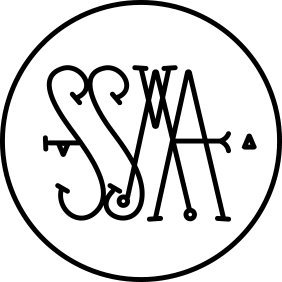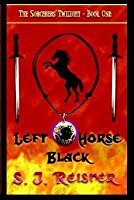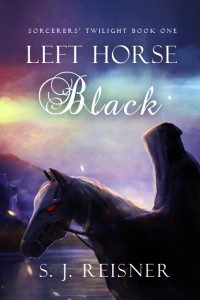
Truths About Self-Publishing #writing #indieauthor
I recently had the unfortunate opportunity to run across another “old timer” who is under the erroneous assumption that traditionally published = better authors and better quality books. This antiquated idea is still perpetuated by those who make their living, somehow, through the big-five, or other large presses. They’ve likely been told by a publisher representative, agent, old-school author, or corporate industry insiders that independent publishing and ebooks are ruining the publishing world. Rumors still run rampant that independent authors are the ones who couldn’t hack it, and that the books being put out by big publishers are better overall with regard to quality of writing, editing, and covers. (Snookie’s romance novel, anyone?) However, the reality here could not be further from the truth. These lies about independent publishing persist as the last protest of corporate publishing in response to losing their authors, their cash cows, to the indie market. Here is the truth of the current publishing climate as I see it.
- Independent authors and author-run indie presses have taken a LARGE chunk of the book-buying market from the big corporate publishers. Why? Not because what’s coming out of the independent market is shit, but because readers want to read what independent authors are putting out! Sure, not all independent authors are selling books hand over fist, but some are! They’re not selling books that suck, either. Readers know what they like to read and they share what they’re reading with their friends. Word of mouth is how these authors are getting these sales. Not by special placement in a brick and mortar bookstore, and not by huge advertising campaigns. Let’s face it, big corporate publishers have formulas they want their books to follow. Usually, when they’re buying an author’s manuscript, they’re buying the characters, world, and the basic premise of a story. They’re buying Intellectual Property. They’re not necessarily buying the author’s vision of that story. I have several friends published with big 5 publishers and their contracts were contingent on making the changes to the manuscript to tell the story the PUBLISHER wanted the author to tell. Remember, it has to hit on a specific formula so it’s appealing to the widest possible audience. Also remember that I, too, was offered a contract from a big five on my first OTS novel, contingent on changing Liz into a white witch, removing all references to Satanism and demons (unless I wanted to stick to the tropes and call it horror), and making the storylines “less dark.” I did the hardest thing I’ve ever done — I turned down the contract because first, I have a real problem with authority (Fuck the Man!), and second – because everything in my gut told me to run and to not look back. Did I probably kill my only chance at a big five contract — yes. Did I probably kill the possibility of the OTS series selling thousands of copies on bookstore shelves? Absolutely, but my OTS series has done quite well as an indie title, thank you very much. I may not have thousands and thousands of readers for that series yet – but the hundreds I do have are loyal, I have a personal relationship with my readers, and they LOVE my books. That is the difference between me as an indie author and them as a huge corporate publisher. I have an actual dialog with my readers. We get face time! The readers want to read my story in the way I envisioned it.
- Independent authors, overall, make more money than most traditional authors. In the current publishing climate, most mid-list traditional authors are lucky to make $10,000 to $20,000 in a year’s time. Some of the better sellers might be lucky to make around $60,000 in a year. While not all indies are doing well, there are far more indie authors in the $30,000 – $200,000 a year range. Why? Well again, indie authors are selling books because readers like their books. The market weeds out books readers don’t want by default (all without a middleman). But second, because indie authors are making FULL PROFIT off of their work. They don’t need to sell millions of copies to make a decent livable wage in a year. Traditional authors may get advances (usually paltry, as in under $6,000), but those advances have to be earned out before the author starts earning a small royalty on each copy sold. By saying small, I mean small. With some small traditional presses, an author can earn $1-$2 per book sold. But with larger corporate publishers, authors often earn no more than $0.90 cents per book. Most traditional authors, unless they’re lucky enough to be in the 1% that the publishers actually pay decent wages to, are poor and have to keep a day job or have a spouse who supports them. I know far more full-time indie authors than I do full-time traditional authors and that’s a fact. If my husband’s industry was doing better – I’d be dumping my part-time day job and writing full time, too. I’d also like to point out that of all the traditional contracts I’ve had over the years – I’ve never made more than I would have made on my own, and I’ve never sold more books through small traditional publishers than I would have sold on my own. The exception to that being Saving Sarah May, and the reason I went to an author-run publishing house with that one is that I know NOTHING about marketing romance/women’s fiction, and they do.
- There are a lot of traditional authors who are going indie because they’re tired of starving and getting ass-raped with bad contracts. A lot of us who have played in the traditional sandbox (especially those of us who have gotten burned) have taken back our books (if we were able to), and gone home. True, going indie is more work, it’s expensive since you have to hire editors and cover artists and pay for all your own marketing, and you have to run like a business, but the rewards of having an actual income from your writing (even after expenses) is totally worth it.
- While most all indies are using print-on-demand services like IngramSpark and Createspace to fulfill physical book orders, a lot of large traditional presses are starting to do the same, especially with books by new, untested authors. Why? Because they’re learning what we already know. It’s cheaper for the publisher, it’s environmentally friendly, and it saves money not having to warehouse and ship tons of books to distributors. Basically – our trade paperback books are printed using the SAME technology, so there is no difference in the quality of most trade paperback and standard hardcover bindings. Now sure – some publishers will put out higher quality hardcover bindings, but usually that sort of thing is saved for limited edition print runs, or special editions for authors whose work already sells well.
- There are some indies out there who can’t afford to pay $500 a cover for nice cover art, but many indies are paying $200+ per cover, and some of us are using the SAME graphic artists the big presses are using. The gap between traditional and indie cover art is closing fast. To be honest, I’ve seen some really crappy cover art come out of the large corporate publishers recently. But as with all art – beauty is in the eye of the beholder. My worst cover – the worst one in my career – was the cover a traditional publisher put on my first fantasy novel. Even as poor as some of my early cover art was, that one still takes the cake to this day. Don’t believe me? Take a look – compare this cover -left – to the cover I paid to put on my self-published version of the same book – on the right. Which one is better? Seriously — I dare someone to tell me the cover on the left – the traditionally published edition of this book – was awesome. LOL We all know it’s not. I still cringe in shame when I see it.
6. The same goes with editing. There was a time (2010-2013) back when a lot of indie authors didn’t hire editors. However, that is rapidly changing because to survive in this business – you do need to have editors go over your work. Sure, most books escape into the market with typos. I have about 5 corporate publisher books I could pull down from my shelf right now and point out errors. I have a few small press books where I could do the same, and a few indie titles where a typo escaped into the text. Typos happen. But by far, and I can say this because I’ve been reading a lot of indie titles lately, most of the books are just as clean as the traditionally published books. Why? Because many indies are paying professional editors to go through their work. Some of them are even using freelancers who also work for traditional publishers. Imagine that! Also, a lot of the stories I’ve been reading are well done and just as satisfying as, or more satisfying than, the books coming out of traditional corporate publishers.
So if the indie market is getting savvier and producing quality books in both content and design that can compete with the bigger, traditional publishers, AND authors are actually making some money from their writing with their indie titles, is it any wonder so many traditional authors are making the switch, or at least going hybrid?
Yet the myth of indie suckitude perpetuates because big publishing still wants authors to believe that we need them in order to succeed when the reality is the opposite. Corporate publishers need authors because, without us, they don’t have intellectual property to buy and sell. Every person they convince of indie inferiority, and every person who develops a bias against indie authors as a result – whether they’re bookstore owners, librarians, agents, editors, or other writers – help big corporate publishing keep writers on the verge of starving. That’s not cool. We all bitch when big corporations like Wal-Mart pay their employees under $15 an hour, or when teachers’ salaries are too low. But we have no problem when the music and publishing industries underpay the people creating the content. It’s something to think about.






